Contents
Why do we need cement kiln refractories ?
TO DOWNLOAD THE MOST IMPORTANT BOOKS , MANUALS , OPERATION NOTES , FORMUFLAS , EXCEL SHEETS CLICK HERE NOW !!
To prevent this!
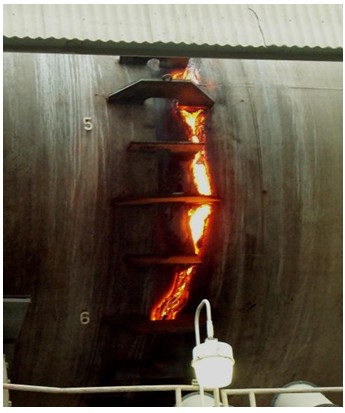
- Definition / Classification
- Selection Criteria
- Analysis of refractory degradation
Definition & Classification
- Definition & classification
- Types of bonding
- Basic (MgO, CaO) refractory types
- Acidic (Al2O3 – SiO2) refractory types
- Non-shaped products
- Examples
According to ISO R 836, refractories are defined as
“non-metallic materials having a minimum pyrometric cone equivalent of 1500 °C”
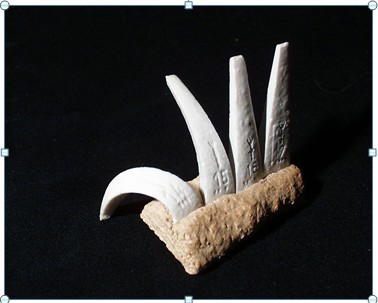
Refractories according to PRE recommendations subdivided into the following technical qualities:
- dense, shaped products
- insulating, shaped products
- dense, unshaped products
- insulating, unshaped products
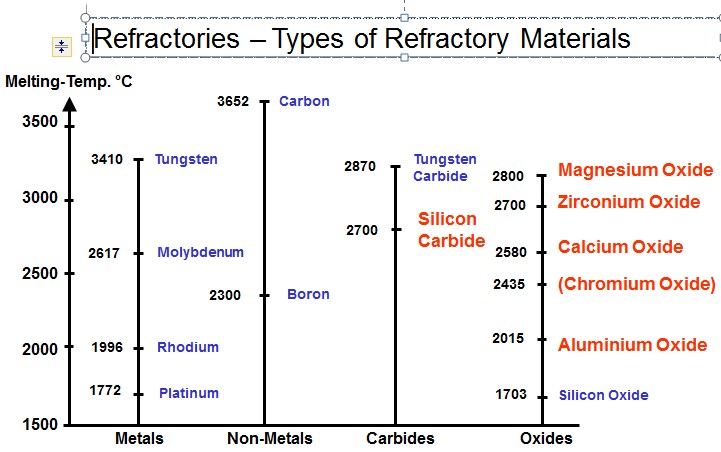
Molybdenum
Rhodium
Platinum
Carbon
Boron
Tungsten
Carbide
Silicon
Carbide
Magnesium Oxide
Zirconium Oxide
Calcium Oxide
(Chromium Oxide)
Aluminium Oxide
Silicon Oxide
Refractories – Chemical Classification
- Chemical classification of dense shaped refractory products according ISO 1109

- Chemical classification of dense shaped refractory products according ISO 1109
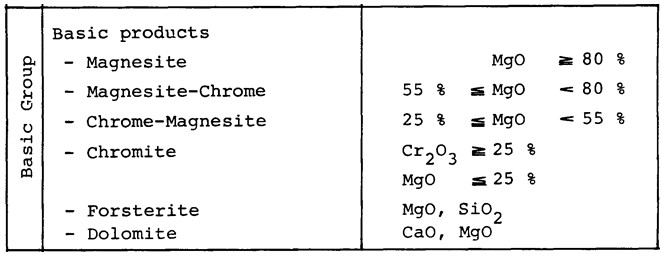
- Chemical classification of dense shaped refractory products according ISO 1109
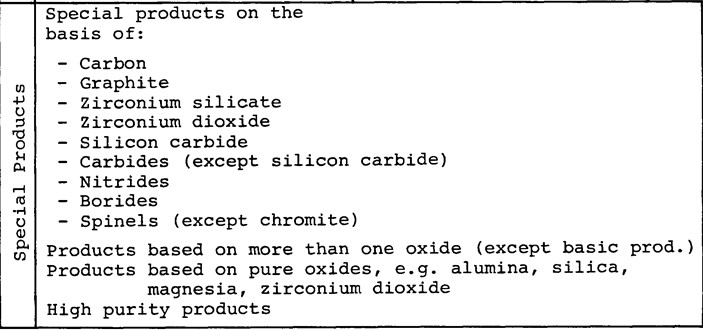
classification of Types of Bonding
According to Production Temperature
- Unfired products
- Fired between 150 to 800 ºC
- Fired at >>800 ºC
According to Material Nature of Bond
- Hydraulic
- Organic
- Inorganic
- Fireclay
- Ceramic
Types of Bonding

- Bonding types in magnesite-chrome refractories
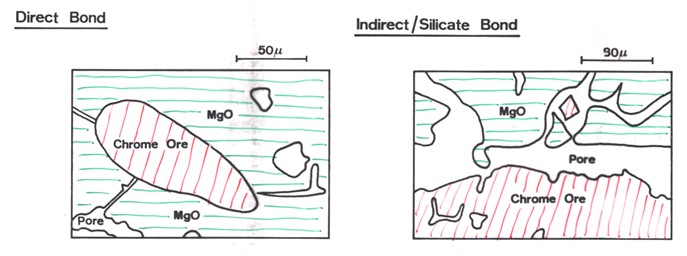
- Basic (MgO, CaO) refractory types
- Main Factors Influencing Performance of MgO Sinter
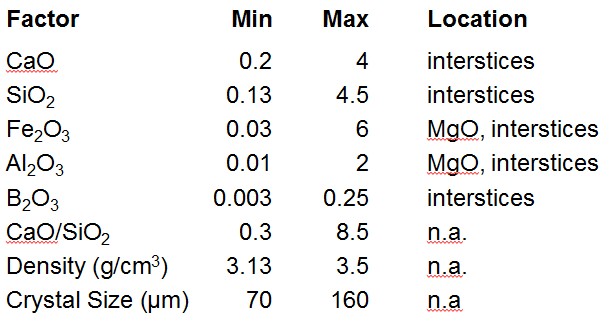
- Influence of CaO / SiO2 on Interstitial Phases in MgO Sinter
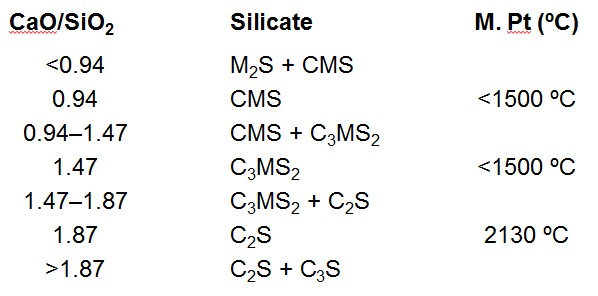
Classification of MgO-based Refractories
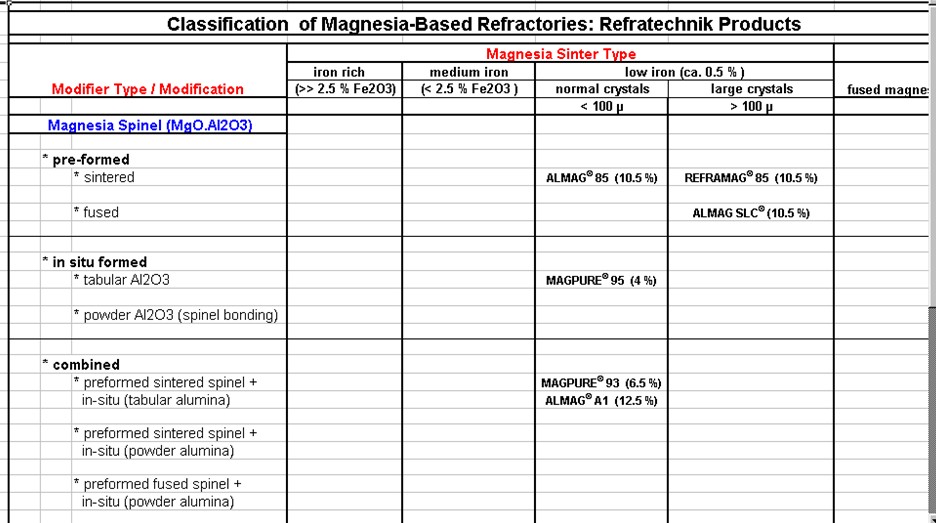
Structures of “Spinel” Bricks
Spinel MgO•Al2O3
Hercynite FeO•Al2O3
Mg-chromite MgO•Cr2O3
Chromite FeO•Cr2O3
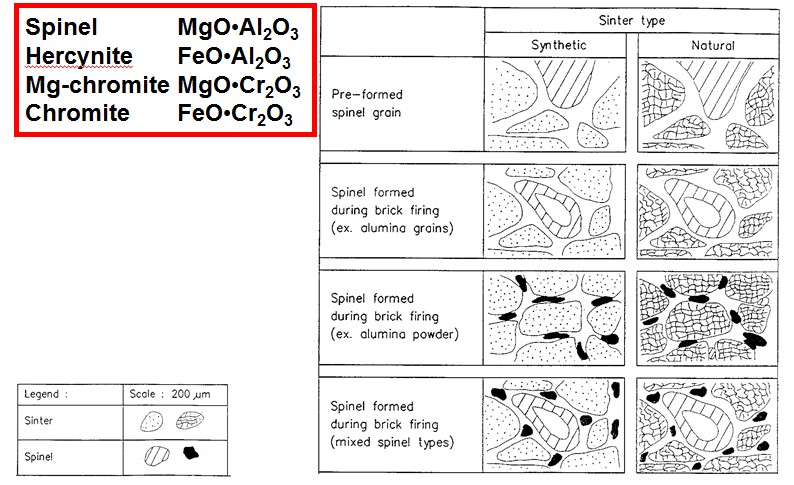
- Acidic (Al2O3 – SiO2) refractory types
Raw Materials for Al-Si-Refractories
- Natural Raw Materials for Alumino-Silicate Refractories

Fireclays Al2O3•2SiO2•2H2O 25 – 45 1.5 – 3.5 1 – 2
(Kaolin, Ball, Fire, Flint)
Sillimanite Al2O3•SiO2 45 – 65
Kyanite Al2O3•SiO2 45 – 65
Andalusite Al2O3•SiO2 45 – 65
Bauxite Al2O3•2H2O 80 – 90 < 2.0 0.02 – 0.6
(Calcined Refractory Grade)
- Synthetic Raw Materials for Alumino-Silicate Refractories
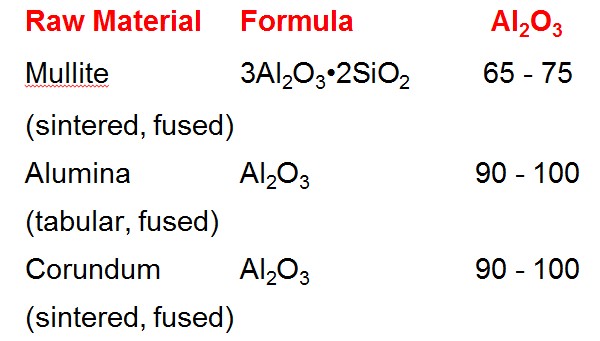
Mullite 3Al2O3•2SiO2 65 – 75
(sintered, fused)
Alumina Al2O3 90 – 100
(tabular, fused)
Corundum Al2O3 90 – 100
(sintered, fused)
- Non-shaped products
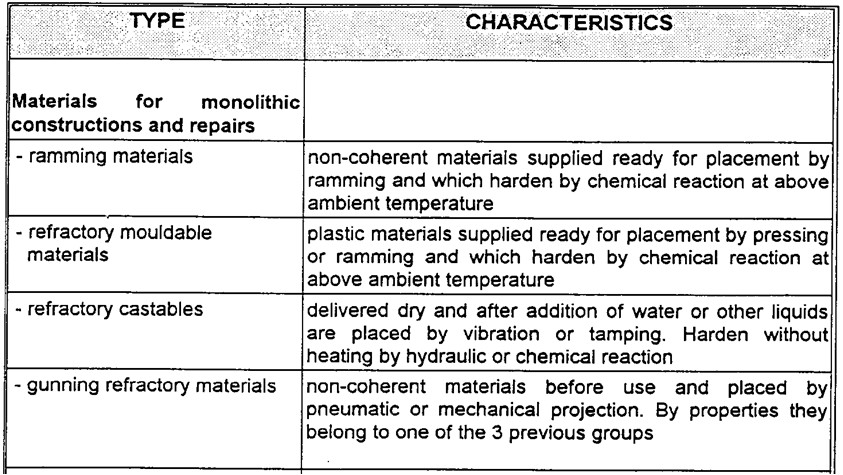
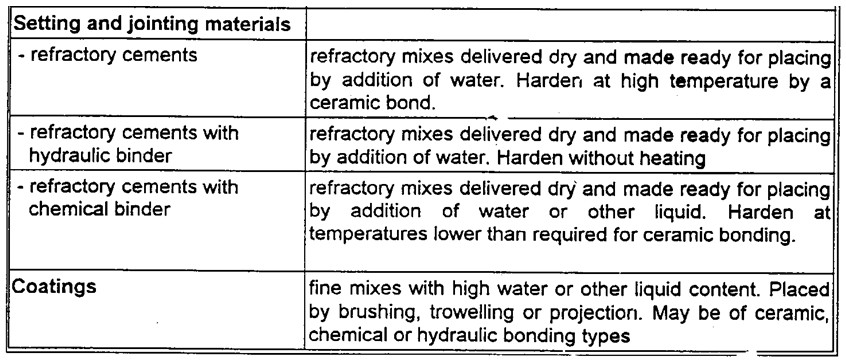
- Types of Refractory Castables
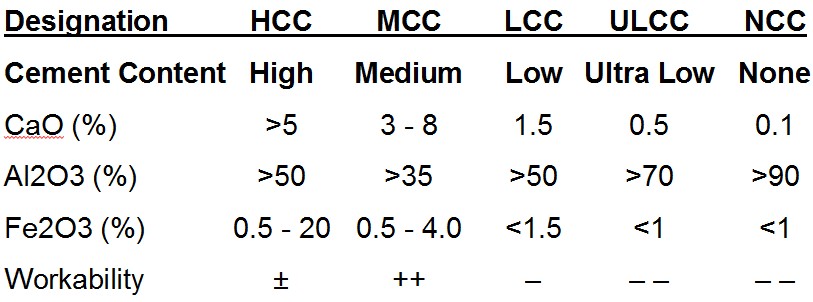
Cement Content High Medium Low Ultra Low None
CaO (%) >5 3 – 8 1.5 0.5 0.1
Al2O3 (%) >50 >35 >50 >70 >90
Fe2O3 (%) 0.5 – 20 0.5 – 4.0 Workability ± ++ – – – – –
if you have any questions
please Contact Refractories Team : project20062015@gmail.com
TO DOWNLOAD THE MOST IMPORTANT BOOKS , MANUALS , OPERATION NOTES , FORMUFLAS , EXCEL SHEETS CLICK HERE NOW !!
Thanks for the data shared.
For more information on “Properties and Type of Refractory required for Cement Rotary Kiln”, “How to minimise Refractory Failure and wear of Refractories inside a Rotary Kiln” and more please visit
http://www.industry.guru/cement-industry-news-cement-plant-technology.html
deep the good work
thank you
please I need more information about clinker
Fabulous, what a website it is! This website presents
useful facts to us, keep it up.
Really excellent post, I definitely adore this site,
keep on it.
I was waiting for this kind of issue. Thank you
very much for the place.
The article has really peaks my interest. Iwill bookmark your website and keep checking for new info.
This actually replied my problem, thank you!
Thanks for the helpful information! I do craft posts on my own blog, but it never occured to me that I could do something similar as a paid contributor on other websites.